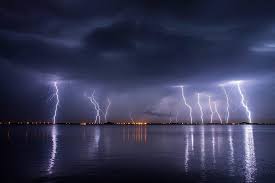PATNA: The death toll from a series of powerful thunderstorms and lightning strikes across Bihar climbed to 80 by Friday, with 66 of those fatalities reported after midnight alone. The state’s disaster management department has called the recent spell of pre-monsoon weather “calamitous,” noting that Bihar averages around 250 deaths annually due to natural disasters.
“Casualties from thunderstorms and lightning have now reached 80. The government extends its deepest condolences to the families of the deceased,” said Vijay Kumar Mandal, Bihar’s disaster management minister.
The district of Nalanda reported the highest number of fatalities at 23. Among these, seven people were killed when an old tree and a temple wall collapsed during the storm. The ferocity of the storm left behind widespread destruction, damaging homes, uprooting trees, and flattening rabi crops and onion plantations.
“There was hardly any time to seek shelter,” said Gupteshwar Prasad, an official from Nalanda. “People who took refuge under trees saw them uprooted, and those who entered the temple for safety faced tragedy when its walls came down. The intensity was unimaginable.”
This marks the second time in four years that such a high number of casualties from a single day of extreme weather has hit the state. In June 2020, over 90 people—mostly poor farmers—died during one of the deadliest lightning strikes in Bihar’s history. Many had been working in their fields, encouraged by what had appeared to be a favorable start to the monsoon season.
Experts are attributing the surge in extreme weather events to climate change and rising temperatures. Ashish Kumar, a meteorological scientist, said that while storms like Kaal Baishakhi and nor’westers are common during the pre-monsoon period, current climate patterns in Bihar, West Bengal, and Jharkhand have been particularly conducive to more intense weather.
“There is also a glaring lack of awareness among villagers,” Kumar noted. “This significantly adds to the risk, especially between April and June when such events peak.”
Avinash Kumar from the disaster management department echoed similar concerns, pointing to both increased frequency of severe weather and low public responsiveness to early warnings. “On April 10 alone, the department sent 12 crore SMS alerts advising caution, but many people ignored them,” he said. Public awareness campaigns are ongoing to try and reduce such losses in the future.
He added that southern Bihar—which receives less rainfall—tends to be more vulnerable to pre-monsoon lightning strikes, though the frequency typically declines once the monsoon fully sets in.
A recent study by three Patna-based meteorological scientists sheds further light on Bihar’s lightning vulnerability. The research revealed that cloud-to-ground lightning is more common in the eastern part of the state due to moisture influx, creating regional hotspots for strikes. On average, Bihar recorded 271 lightning-related deaths and over 57 injuries annually between 2017 and 2022.
The study identified four high-risk zones:
- Southwest Bihar: Including Kaimur, Rohtas, Aurangabad, and Gaya
- South-central region: Covering Patna, Nalanda, and Nawada
- Eastern Bihar: Encompassing Banka, Bhagalpur, Katihar, Purnia, Kishanganj, and Araria
- Northern region: Covering East Champaran, Gopalganj, and Sheohar
These areas continue to experience the highest number of lightning-related casualties, underscoring the growing urgency for climate adaptation and public safety initiatives in the face of increasingly erratic weather.






